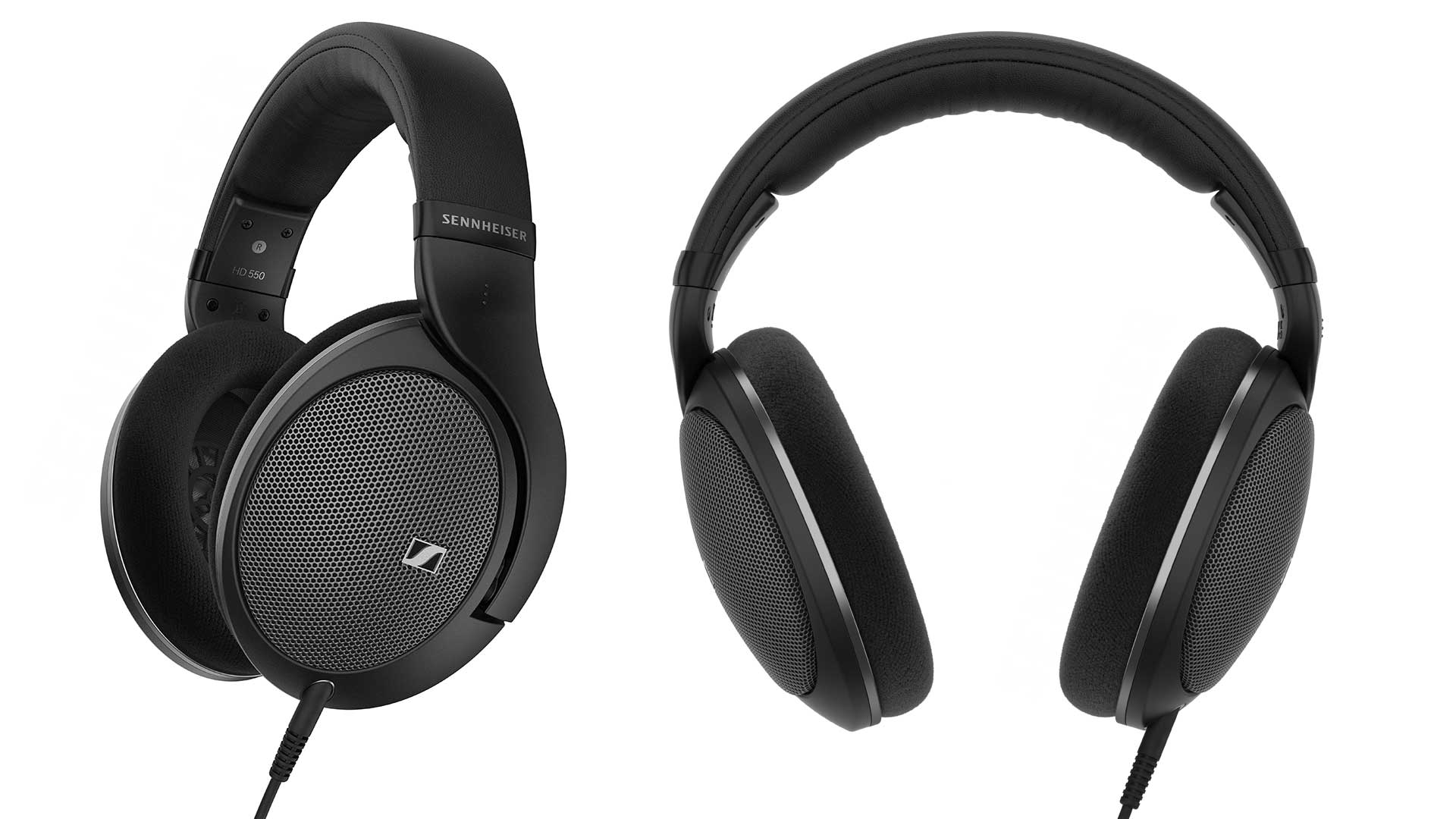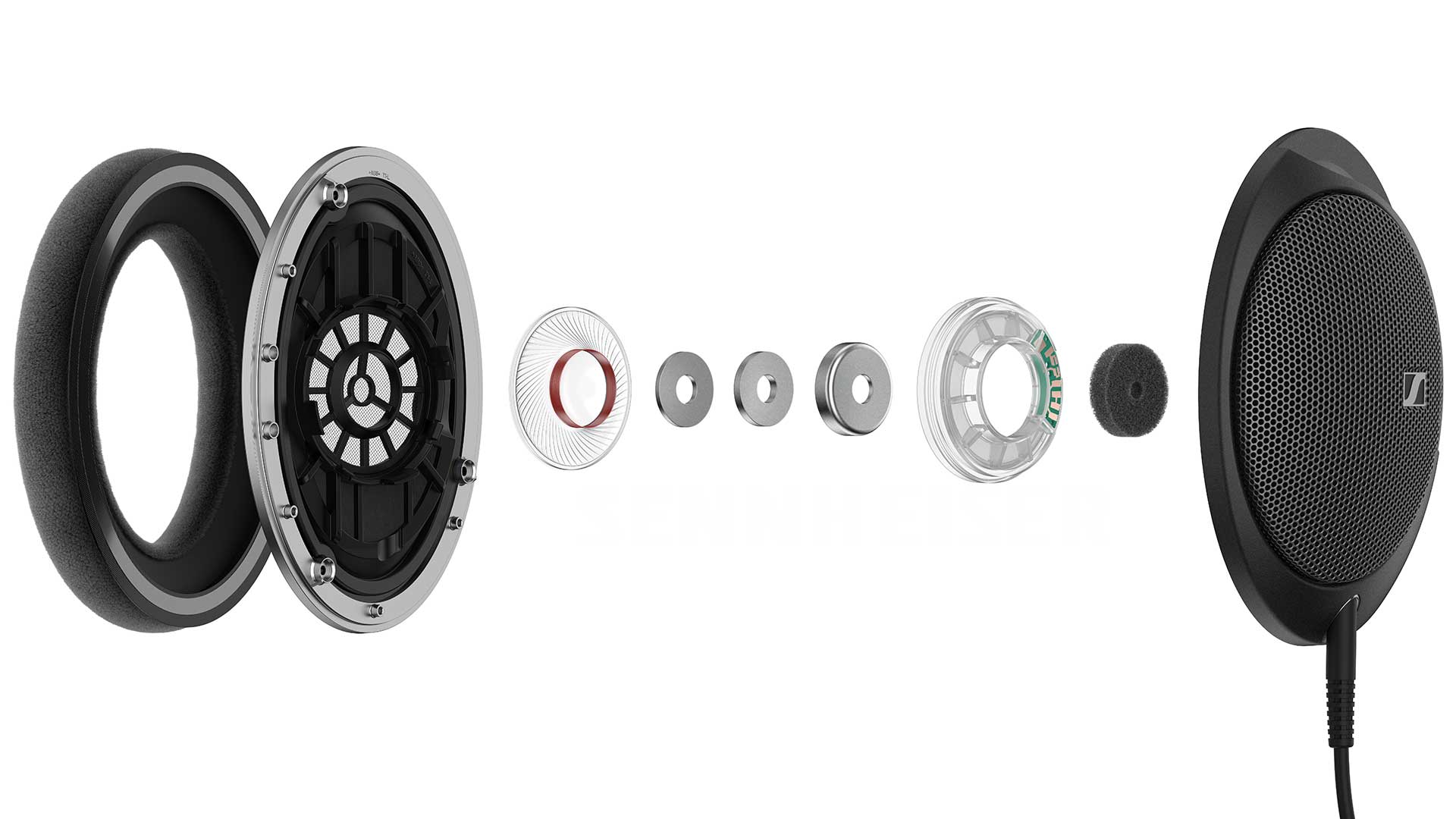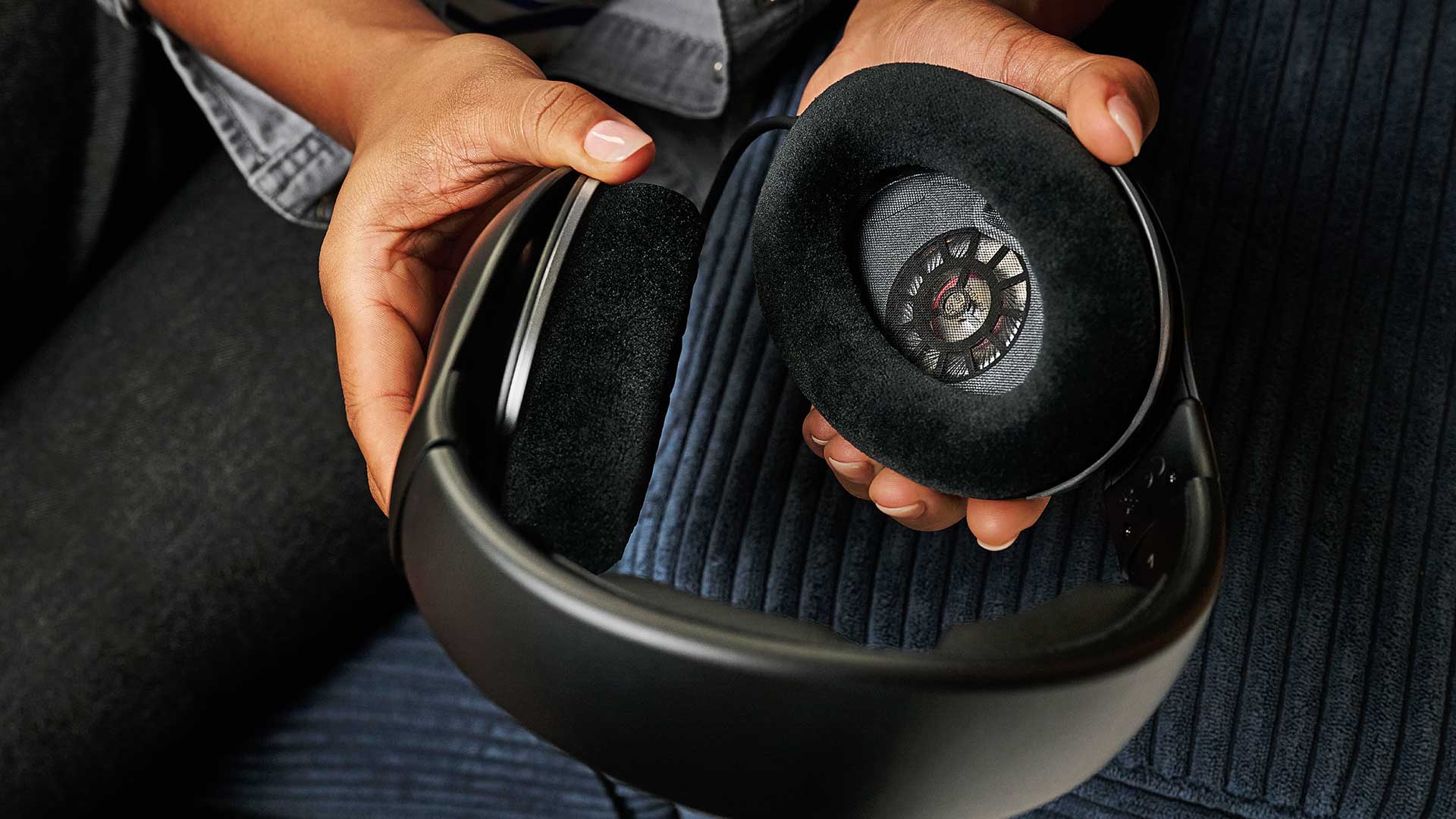Sound+Image Verdict
Ultimately we’d label the HD 550s’ balance as almost entirely neutral. They deliver sufficient bass but don’t pump up it up like a closed street headphone, nor mush it up either, simply delivering things cleanly. Their biggest competitors may be Sennheiser's own similar models.
Pros
- +
Well-balanced open sound
- +
Analogue cabled quality
- +
Light and comfortable
Cons
- -
Sound spilling limitations
- -
Other strong Sennheiser rivals
Why you can trust What Hi-Fi?

This review originally appeared in Sound+Image magazine, Australian sister publication to What Hi-Fi?. Click here for more information on Sound+Image, including digital editions and details on how you can subscribe.
These are cabled open over-ear headphones, a type which has long been considered restricted to certain uses, being relatively unsuitable for others. Their cabled nature counts against using them as a moveable feast: besides, if you’re out and about then such open headphones will let surrounding noise in, potentially swamping your music, while also letting your tunes escape into the wild, where they may annoy fellow travellers on the commute or garner irritated glances in an office environment.
Even if you’re at home, you can’t use open headphones in a shared space, for the same reasons. So traditionally we have come to think of open cabled headphones like these as being for true solo listening, at home, alone. Real hi-fi headphones.
But this has recently changed. Open headphones have become a popular choice with gamers, who are of course often at home alone (although connected to the world) in darkened bedrooms as they mash away at their controller buttons. Yet we gather, from those who know a little more about such things, that gamers are now favouring open headphones even when they congregate in teams and groups for gaming sessions, perhaps gathering useful real-world information overlaid upon their gaming soundtracks.
And in addition, the world at large is changing. We have noted of late that previous consideration of fellow commuters seems to be on the wane, judging from the many people who now play phone videos on the bus and in airports without using any headphones at all. So perhaps today’s self-obsessed world has become better suited to the more widespread application of open headphone designs.

Design & build

Type: open-backed, overear, cabled, dynamic
Cable length: 1.8 metres minijack with adaptor
Ear pad material: synthetic velour
Quoted frequency response: 6Hz – 39.5kHz (no envelope stated)
Nominal impedance: 150 ohms
Weight: 237g
We, however, will continue to judge such headphones primarily in the context of being home alone, and listening to music, or movies, or podcasts or audio books. And although Sennheiser does mark this model as a “microphone-ready design”, we will not be attempting to connect a microphone to the HD 550 and thereby Twitch our way to fame. Shocking traditionalism, perhaps, from longstanding hi-fi reviewers, but through many decades we have always been very at home with Sennheiser, a brand which has handled our tunes for as long as we have been listening.
We had a case of déja vù unpacking Sennheiser’s new HD 550; haven’t we done these? They looked near-identical to a pair of open Sennheisers we already had to hand, the HD 560S, which we reviewed a few years ago. The new HD 550s have an indent instead of a bulge for the logo on the outer grille, they have a light grey highlight on the inside of the ear cup, and they turn the Sennheiser name sideways on the headband (which also has less thick padding). But otherwise the two headphones appear identical.
Of course this doesn’t speak to the materials and drivers within. It does highlight Sennheiser’s lack of differentiation between designs in recent years; even the latest wireless noise-cancelling Momentums are similarly near-featureless headsets, as are Sennheiser’s Accentum wireless headphones, not much different from the HD 550 either, aside from having flat closed headshells rather than open, and a different yoke mechanism.
The latest hi-fi, home cinema and tech news, reviews, buying advice and deals, direct to your inbox.
We remember Sennheiser designs of old which were downright quirky, but we gather that market research has led the licensee of the consumer Sennheiser brand, Swiss medical company Sonova, towards this simplification of design. The former more engineered Sennheiser look was popular with only a small percentage of the market, and the goal is to reach a wider market, so out went the bling and in came the greys and blacks (with occasional cream or copper parts inserted to relieve the monotony).
Another obvious comparison product was almost simultaneous in release, as well as very similar-looking – the HD 505, differentiated as an Amazon exclusive model by having copper-coloured highlights (pictured below, on the right). Given that the literature in the box for our HD 550 review model was common to the HD 505, with both models listed at the top (visible on our lead image above), we have our suspicions that they are not much otherwise differentiated. And yet the HD 505 is selling cheaper at £230 / US$280 / A$450, and is being discounted substantially further on Amazon as we write (you'll find the latest local Amazon price in WHF UK's HD 505 review here).
Meanwhile that similar-looking HD 560S headphone sells at $319.95; we kept this alongside as one of our reference comparators during this review.
Sennheiser's regular discounting can also create rivals among its higher models: in Australia as we write (June 2025), the new HD 550 is at exactly the same price as the higher-level HD 650, currently discounted to the HD 550 price from, er, $300 higher.
Such discounts change regularly, so apologies if the mentioned ones have ended by the time you read this, but it shows that it's always worth scouting at your local dealer (or checking Sennheiser Hearing's site) for higher models on discount before investing in a new model at full price.
Still, while the HD 550's exterior design lacks any new element of visual interest, and doesn't achieve the physical presence and grandeur that still exists in Sennheiser’s higher models like the HD 660S2 (up at $949.95), they are certainly solid enough, and gain by having most elements well tried-and-tested on other models. Common design across multiple models may be boring, but there is at least an argument that keeping things simple and common plays to reliability, and to potential economies that will allow better sonic components for this level of headphone.

Listening sessions
That does seem the plan for the HD 550, because during listening there were moments when we might have been wearing far more expensive models.
They use a custom 38mm 150-ohm transducer made at Sonova’s production facility in Tullamore, Ireland, with a quoted frequency range of 6Hz to 39.5kHz, and lower than 0.2% total harmonic distortion (@1kHz). The drivers are positioned to angle back towards the ears, through acoustically-transparent and largely visually-transparent dust covers.
The HD 550s certainly leverage the two biggest advantages of cabled use over Bluetooth: the potential for greater detail in the signal, and for greater available power to drive the headphones. For Bluetooth headphones, signals have to be digitised, and then squeezed through the invisible Bluetooth pipe. A cabled signal is analogue all the way, and depending on your source it may have near-infinite detail! And the HD 550s come loaded with the ability to deliver that detail. Listen to how they handle the delicacy of the drum fills on Fiona Apple’s recent cover of Neil Young’s Heart of Gold, the textures and space around the little snare paradiddles, and the breathy edge to Apple’s vocals.
Or the scintillating guitar picking that opens Suzanne Vega’s Witch, panning out and swirling around an already-bright central vocal, plenty of width and air from the HD 550s before the drum entry takes the song to rockier territory.

A second advantage of cables over wireless is straightforward power – Bluetooth headphones are very often annoyingly volume limited, whereas these cabled headphones are powered by whatever quality of headphone amplifier you can give their 150-ohm impedance. The HD 550s certainly seemed to love good power, and they sounded their best given more than modest quantities, subject to the usual warnings on safe use and taking care of your ears. The point is that you can enjoy minimal distortion up to relatively higher levels. Aphrodite’s Child’s Break, say, could be played loud enough without distortion to give real impact, while through the HD 550s the same band’s early single Five O’Clock sounded wildly synthtastic up loud on its choruses, organ-rich in its laidback verses, showing Vangelis’ dynamic rock chops as he fills between Demis Roussos’ soaring vocals.
Keeping things emotive, Arvo Pärt’s Cantus in Memory of Benjamin Britten piled on the pathos and under the HD 550s’ abilities could easily maintain its great bass swell while still separating the higher strings and handling the recurrent tolling bell – a challenge for any single driver to handle, yet the HD 550s held everything together.
And there was certainly no problem sinking into the music under these dynamic open cans, and they benefit from being able to give some simple dynamic punch as well: the heartbeat on the intro to the new mixes of Floyd ‘Live At Pompeii’ has an even tighter and possibly deeper kick to it than the infamous ‘Dark Side’ intro sequence on which it is based, and the HD 550s really did push down to genuinely deep bass for this impressive impact.
We had some other models under review at the same time, including the rather cheaper new Audio-Technica ATH-R30x, another wired open headphone which perhaps surprisingly offered more sparkle. But ultimately the Sennheisers were the safer listen, never slipping into sibilance, and without any longer-term impact of fatigue during extended higher-level listening.

Of those similar Sennheiser models, we did have the open HD 560S to hand, which made an interesting comparison, combining elements of the HD 550s with the more sparkly merits of the Audio-Technicas. The HD 560S sound is perhaps a little less controlled, but was substantially more open-sounding and with a far better and more natural delivery of both bass and high-end; on track after track our preference was for the cheaper HD 560S model.
A two-piano 2023 recording ‘Rachmaninoff For Two’ piece made the comparison clear: through the HD 550 it was one big piano sound with stuff going on, through the HD 560S it was clearly two pianos delivering much improved and separated dynamics. The HD 550’s largest benefit was improved comfort, mainly from their significantly lighter weight.
On the other hand, the HD 550 sound was similarly advanced in openness and dynamics over the same piece when played on a pair of Momentums via Bluetooth, showing the advantages so easily gained by using a cable into open-backed headphones.

Verdict
Ultimately we’d label the HD 550s balance as almost entirely neutral. They deliver sufficient bass but don’t pump up it up like a closed street headphone, nor mush it up either, simply delivering things cleanly.
The midrange isn’t drippingly gorgeous or heart-meltingly forward, but it’s well-balanced against clean higher frequencies that never shriek, avoid any specific feeling of rolling off or the enclosed feel of closed headphones, though they might sparkle just a little more up top.
It’s the spaciousness and lack of pumpiness in which the open design stands out from closed models, and while we’d recommend a side-by-side audition with a pair of Sennheiser’s HD 560S, if you can find them, the HD 550s’ neutral balance maintains the reassurance of Sennheiser’s continuing ability to provide predictably enjoyable sound at whatever level you choose to engage with the brand.

Jez is the Editor of Sound+Image magazine, having inhabited that role since 2006, more or less a lustrum after departing his UK homeland to adopt an additional nationality under the more favourable climes and skies of Australia. Prior to his desertion he was Editor of the UK's Stuff magazine, and before that Editor of What Hi-Fi? magazine, and before that of the erstwhile Audiophile magazine and of Electronics Today International. He makes music as well as enjoying it, is alarmingly wedded to the notion that Led Zeppelin remains the highest point of rock'n'roll yet attained, though remains willing to assess modern pretenders. He lives in a modest shack on Sydney's Northern Beaches with his Canadian wife Deanna, a rescue greyhound called Jewels, and an assortment of changing wildlife under care. If you're seeking his articles by clicking this profile, you'll see far more of them by switching to the Australian version of WHF.
You must confirm your public display name before commenting
Please logout and then login again, you will then be prompted to enter your display name.


